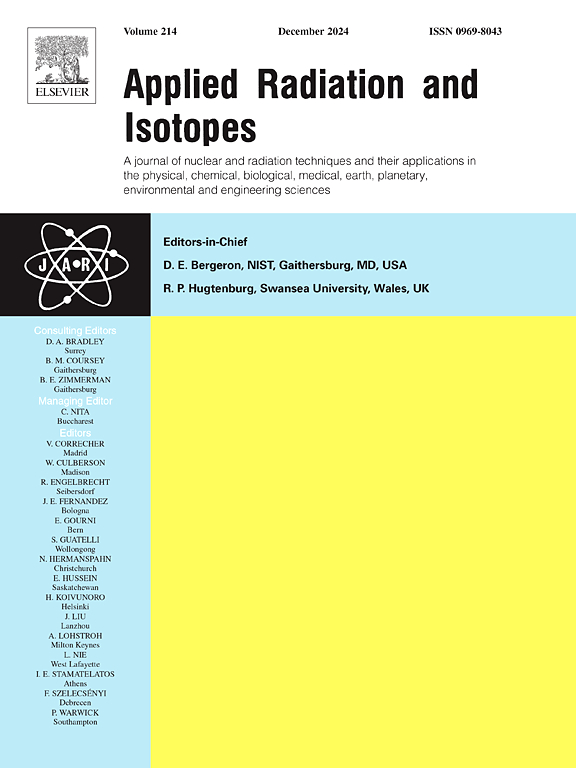Optimization of parameters for the measurement of radon-222 in water using two phase liquid scintillation counting
IF 1.6
3区 工程技术
Q3 CHEMISTRY, INORGANIC & NUCLEAR
引用次数: 0
Abstract
The liquid scintillation counting (LSC) technique is one of the most popular and sensitive ways to quantify 222Rn in drinking water as it allows automatic analysis of multiple samples. For the accurate and precise determination of 222Rn in water samples the calibration procedure was standardized for two-phase systems using Hidex 300 SL. This method implies mixing of water samples with lipophilic scintillation cocktail, which has a high solubility for 222Rn, while the more hydrophilic radionuclide like 226Ra will remain in the aqueous phase and do not interfere with or have a quenching effect on the counting. The efficiency calibrations were found to be more accurate with 226Ra standard rather than conventionally employed pure alpha and beta standards. The adjustment of the counting window and alpha/beta settings was done by changing the Pulse Length Index (PLI) value iteratively until the alpha and beta regions were separated. Based on the obtained results, with proper adjustment of calibration parameters, the method can be used for determining radon in water. In the developed method, a counting time of 300s was sufficient to obtain a minimum detectable activity below the EPA's222Rn limits.
两相液体闪烁计数法测定水中氡-222参数的优化
液体闪烁计数(LSC)技术是定量饮用水中222Rn最流行和最灵敏的方法之一,因为它可以自动分析多个样品。为了准确和精确地测定水样中的222Rn,使用Hidex 300 SL对两相系统的校准程序进行了标准化。该方法意味着将水样与亲脂性闪烁混合物混合,该混合物对222Rn具有高溶解度,而更亲水的放射性核素如226Ra将留在水相中,不会干扰或对计数产生猝灭作用。与传统的纯α和β标准相比,226Ra标准的效率校准更为准确。计数窗口和alpha/beta设置的调整是通过反复改变脉冲长度指数(PLI)值来完成的,直到alpha和beta区域分离。根据所得结果,在适当调整标定参数的情况下,该方法可用于水中氡的测定。在所开发的方法中,300秒的计数时间足以获得低于EPA 222rn限制的最低可检测活性。
本文章由计算机程序翻译,如有差异,请以英文原文为准。
求助全文
约1分钟内获得全文
求助全文
来源期刊

Applied Radiation and Isotopes
工程技术-核科学技术
CiteScore
3.00
自引率
12.50%
发文量
406
审稿时长
13.5 months
期刊介绍:
Applied Radiation and Isotopes provides a high quality medium for the publication of substantial, original and scientific and technological papers on the development and peaceful application of nuclear, radiation and radionuclide techniques in chemistry, physics, biochemistry, biology, medicine, security, engineering and in the earth, planetary and environmental sciences, all including dosimetry. Nuclear techniques are defined in the broadest sense and both experimental and theoretical papers are welcome. They include the development and use of α- and β-particles, X-rays and γ-rays, neutrons and other nuclear particles and radiations from all sources, including radionuclides, synchrotron sources, cyclotrons and reactors and from the natural environment.
The journal aims to publish papers with significance to an international audience, containing substantial novelty and scientific impact. The Editors reserve the rights to reject, with or without external review, papers that do not meet these criteria.
Papers dealing with radiation processing, i.e., where radiation is used to bring about a biological, chemical or physical change in a material, should be directed to our sister journal Radiation Physics and Chemistry.
 求助内容:
求助内容: 应助结果提醒方式:
应助结果提醒方式:


